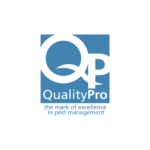Are Termites Attracted To Watered Lawns? Do Termites Only Feed On Moist Sources Of Structural Wood?
It is well known that termites are the most destructive insect pests to structural wood. The annual cost of termite prevention and eradication treatments exceed 2 billion dollars in the United States alone, and this figure does not include termite damage-repair costs. When the annual cost of termite damage-repairs are taken into account, this figure jumps to more than 5 billion dollars. A surprisingly sizable chunk of this money is spent on termite pest control and termite damage-repair costs within the state of Georgia. In fact, residents of the state spend a staggering 200-300 million dollars per year on termite control programs and termite damage-repairs. This is not necessarily surprising considering that Georgia is located within the most termite-infested region in the US.
Georgia’s relatively short winters allow termites to remain active nearly all year round, and the state’s humid climate cause termites to proliferate and spread to new regions at a particularly rapid rate. Although termite populations will continue to grow with each passing day in all regions of the world where they exist, termite infestation rates in Georgia would certainly decrease if homeowners in the state understood how easily infestations could be prevented with a few quick fixes. For example, termites will not infest a home’s structural wood unless the wood is sufficiently moist, and many, if not most infestations occur solely because subterranean termites pinpoint and exploit areas of a home where structural wood has become compromised by unusually high moisture levels.
Structural wood within wall-voids, attics and subflooring can become damp as a result of plumbing leaks, improperly constructed or clogged gutters, and melting snow. As it happens, irrigation on residential landscapes can contribute substantially to the dampening of structural woods. Researchers have already confirmed that irrigated residential and urban areas contain a higher number of foraging termites than non-irrigated areas located within the same vicinity. Naturally, homes located within well-irrigated neighborhoods also see relatively high rates of termite pest issues. Simply eliminating plumbing leaks, cleaning debris from gutters and discontinuing needless lawn irrigation will often suffice to discourage termites from infesting homes in the first place. In some cases, active termite infestations cease once moisture sources are eliminated.
Have termites ever infested a high-moisture environment within your home?






